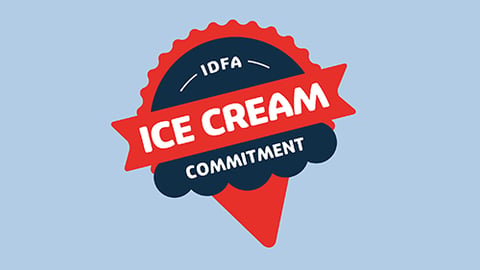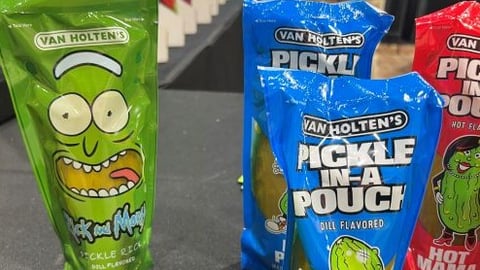How Traditional Dairy Can Compete With Plant-Based Alternatives
The dairy aisle has never been more competitive, yet smart brands are proving that traditional dairy can not only survive but thrive alongside plant-based alternatives. In a landscape saturated with chia, oat and rice milk, innovative dairy companies are carving out winning strategies that capitalize on dairy's inherent strengths.
Take Ballerina Farm, the lifestyle brand that has transformed raw milk into a premium lifestyle product. With nearly 20 million followers across Instagram and TikTok, the brand's approach of opening physical farm stands where customers must sign waivers to purchase their A2 certified raw milk demonstrates how dairy brands can create scarcity and authenticity that plant-based alternatives struggle to match.
[RELATED: How Dairy, Deli and Bakery Are Reinventing the Perimeter Store]
The numbers support this dairy renaissance: Cottage cheese is experiencing a notable resurgence with year-on-year increases of 26.2% in value and 29.4% in volume, driven largely by social media trends highlighting its high protein content (NIQ Panel 22 March 2025).
Meanwhile, 61% of Americans increased their protein intake in 2024 versus just 48% in 2019, with 28% of shoppers actively boosting protein and another 29% planning to increase it in 2025 (Cargill 2025 Protein Profile 1 April 2025; IGD ShopperVista December 2024). This protein focus plays directly into dairy's strengths — milk delivers complete protein with all nine essential amino acids in its most natural form, positioning dairy as a deliberate choice earned through quality, functionality, and flavor.
As shoppers grow weary of ultra-processed foods, traditional dairy's minimal ingredients and natural nutritional profile are winning renewed interest. Clean-label milk, protein-rich yogurt, probiotic ice cream and indulgent flavored butters are all finding fresh relevance with today's health-conscious, flavor-driven consumer. Rather than trying to imitate alt-milks, the smartest dairy brands are boldly leaning into the clarity, completeness and culture that dairy offers. From retro-chic packaging to gut-friendly kefir, this is dairy's moment to reassert its identity on its own terms.
Here are six key dynamics shaping how dairy can thrive in a post-plant-based fatigue market:
1. Real dairy is making a real comeback.
Consumers embraced variety and alternatives, but now they’re questioning what’s actually better for them. The fewer the ingredients, the stronger the appeal. Dairy milk’s clean label has new power. In the United States, sales of dairy milk grew by 2% in 2024. In contrast, the country saw a 5% decline in plant-based milk consumption.
Now is the time to elevate clean-label products as intentional, modern choices by reprioritizing products that meet the demand for transparency and minimal processing, and to innovate where gaps exist.
2. Protein is dairy’s new power play.
With 8 grams per cup and all nine essential amino acids, milk delivers complete protein in its most natural form. As consumers continue to seek functional foods they can trust, protein is becoming dairy’s most compelling proof point. This isn’t about shouting stats, but about owning strength with clarity and conviction. Brands like fairlife and Chobani are leading the charge, building product lines and messaging around protein as a core value, not just a callout.
Standing out in a protein-saturated market requires more than a gram count. Build trust and credibility by positioning protein as key to sustained strength and modern well-being.
3. Adults are driving this growth and embracing both.
Dairy’s return is being led by adults, but it’s not about choosing sides. It’s about choice. 71% of Gen Z and 72% of Millennials report buying both dairy and plant-based alternatives in the same trip, reflecting a more flexible, needs-based approach to consumption. This positions dairy less as a default and more as a deliberate decision, earning its place through quality, functionality and flavor.
Brands that recognize flexitarian habits can win by offering products that adapt to different needs and moments, not rigid loyalties or food rules.
4. Indulgent flavors continue to flourish.
From flavored butters and dairy fat-washed cocktails and dessert-style yogurts, taste is taking the lead. According to McKinsey, 70% of Americans choose dairy products primarily for flavor. This isn’t just about indulgence, it’s about delivering richness with intention.
Now’s the time to lean into layered, sensory-forward experiences that make pleasure a point of difference. Brand worlds that cue richness and indulgent textures will continue to stand out for modern dairy consumers.
5. Weight management creates new dairy occasions.
Yogurt consumption is nearly three times higher in households using GLP-1 medications. For consumers managing appetite and nutrition, dairy products offer a compelling mix of protein, portion control and satisfaction. Do you build credibility through education like Danone — or visibility through labeling like Conagra?
By recognizing these consumers in practical ways, you’re able to demonstrate how your brand is tapped into evolving needs. For instance, acknowledge GLP-1 users with care through thoughtful innovations and targeted storytelling.
6. Kefir’s rise is linked to consumer demand for probiotic-rich beverages.
Consumers are seeking functional foods that support digestive health and immunity. The trend toward healthier, minimally processed and clean-label products has further propelled kefir’s popularity, especially as an alternative to sugar-laden options. Dairy’s inherent compatibility with fermentation makes it a compelling space for ongoing innovation.
Consumers want foods that support — not challenge —- their digestion. For dairy brands, elevating fermentation can be a credible way to show commitment to gut health while also offering options that work for a range of digestive needs.






